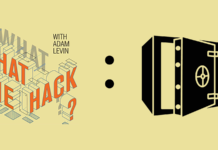

In law school, I was taught – as are all aspiring lawyers – to perfect the art of arguing any and/or all sides of a case. The lawyer’s mantra – “If you can’t beat on the facts, beat on the law. If you can’t beat on the law, beat on the facts. If you can’t beat on either the facts or the law, beat on the table.”
The American Bankers Association has been a vociferous critic of the Credit Card Accountability Responsibility and Disclosure Act of 2009 (CARD Act). According to a recent article in the Wall Street Journal, “During congressional debate on the credit-card bill, banking groups such as the American Bankers Association, or ABA, argued the proposal would result in a significant pull-back in credit while increasing the cost of credit.” To wit, the unintended consequences of this legislative effort would condemn consumers to wander for eternity through a credit desert.
The Act was one of a series of laws passed to compel institutional accountability by injecting greater transparency, fairness and sanity into a system replete with A.D.D. terms and conditions, incomprehensible legalese rivaling the phraseology of Lewis Carol’s Cheshire cat and voluminous contracts that made Charles Dickens’ “A Tale of Two Cities” look like a short story. Five years of irresponsible borrowing, lending and spending had hurtled borrowers down a rabbit hole where first none were left behind, then none left standing, finally ending as those who had clawed their way to the surface were being unceremoniously flung back into the credit vortex. Trillions lost, millions of homes foreclosed and accounts closed, credit limits slashed, credit scores trashed, interest rates and fees flying to and fro.
The final major piece of the tri-parte CARD Act regulatory puzzle was implemented by the Federal Reserve last August. The newly minted Consumer Financial Protection Bureau – created by the Dodd-Frank Act – will assume enforcement of the CARD Act beginning July 21st of this year. As part of its preparations, the CFPB is holding a conference on February 22nd to evaluate whether we are looking at a light at the end of a long, dark, winding tunnel – or the headlamp of the oncoming economic death train our fine financial services friends have warned us about.
We know that banks have engaged in a creative fee frenzy since the CARD Act imposed greater disclosure requirements and longer waiting periods, and restricted their ability to raise or create new rates and fees. Supposedly the storm clouds had gathered, the war party was painted in full battle regalia, dancing around the bonfire, the charge down the hill was imminent and then…
Here comes a study by the Center for Responsible Lending saying that maybe reports of the demise of the American credit card holder might just be a tad premature.
According to the Wall Street Journal, the CRL says, “This report’s findings refute claims by the credit-card industry that the new credit card rules have restricted access to consumer credit and raised its costs.” Significant transparency has been achieved while access has not been denied and costs have not skyrocketed.
Our own Christopher Maag blogs that, according to the CRL Report in 2007 and 2008, confusing, complex pricing that obfuscated true rates and fees – as well as the ever widening gap between rates presented in credit card solicitations and those actually paid by cardholders (approximately 2.3%) – cost consumers $16.3 billion more than they expected. However, after enactment of the law, the gap between advertised and actual rates dropped to .2%. As a result, the difference between what people thought they were being charged and what they were actually charged shrunk by more than $12 billion, according to Josh Frank, CRL senior researcher and author of the report. No doubt some serious clams, but a lot less fishy, yes?
As we troll for the truth, let’s also look at another prediction versus reality. Maag quotes an August 24, 2010 Wall Street Journal editorial, to wit:
“It was among our safest predictions that reduced credit to consumers would result” from passage of the Act. “By limiting the ability of banks to increase rates on delinquent borrowers and to charge fees on unprofitable customers, Washington encouraged card issuers to be more selective in advancing credit and to demand higher rates when they do.”
Maag reminds his readers that “when adjusted to factor in the effects of the recession, data from the Federal Reserve Board shows that interest rates held steady after passage of the Act.” And, “The ratio of American families receiving credit card solicitations in the mail actually increased after the act passed, from 40% in 2009 to 60% recently, according to mail volume data from Mintel Comperemedia.”
Do I see a slight blush on the faces of the Murdoch marauders?
According to the Journal, “a study CardHub.com released this week finds that high credit-card interest rates over the past few months have been the result of the economic environment, not the CARD Act.”
Are those at the American Bankers Association, who came to scoff, remaining to pray? Well, not exactly.
As per the Journal:
Still, the ABA, says that while the CARD Act has helped lead to greater price transparency for consumers, the reality is less credit and higher prices for a number of Americans.
“We think the real story is that the number of new accounts is dramatically down and a significant number of working Americans are being edged out of the marketplace or facing higher rates and tougher credit terms,” said Kenneth Clayton, ABA’s senior vice president and general counsel for card policy. “It’s impossible to say at this time whether that’s a result of the CARD Act, the economy, or a bit of both.”
What do you think? Are they banging on the facts, banging on the law, or banging on the table?
Originally posted at Credit.com.









